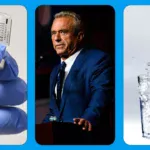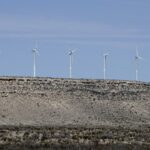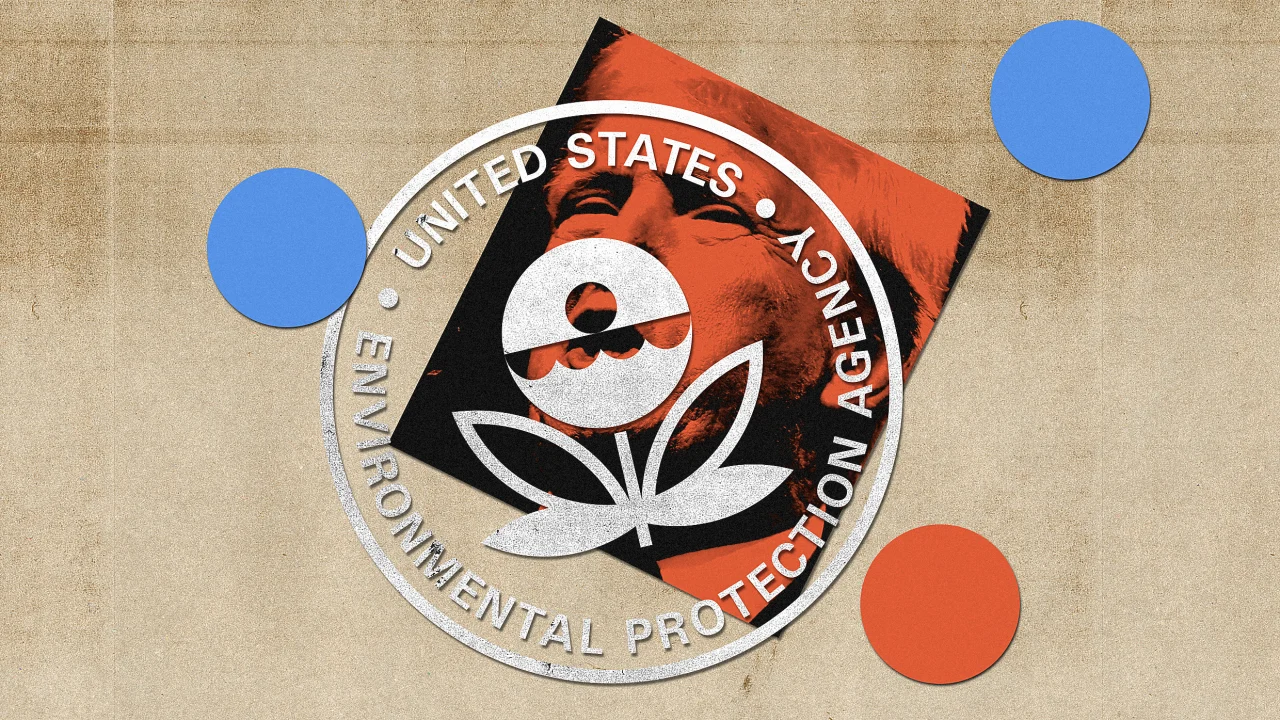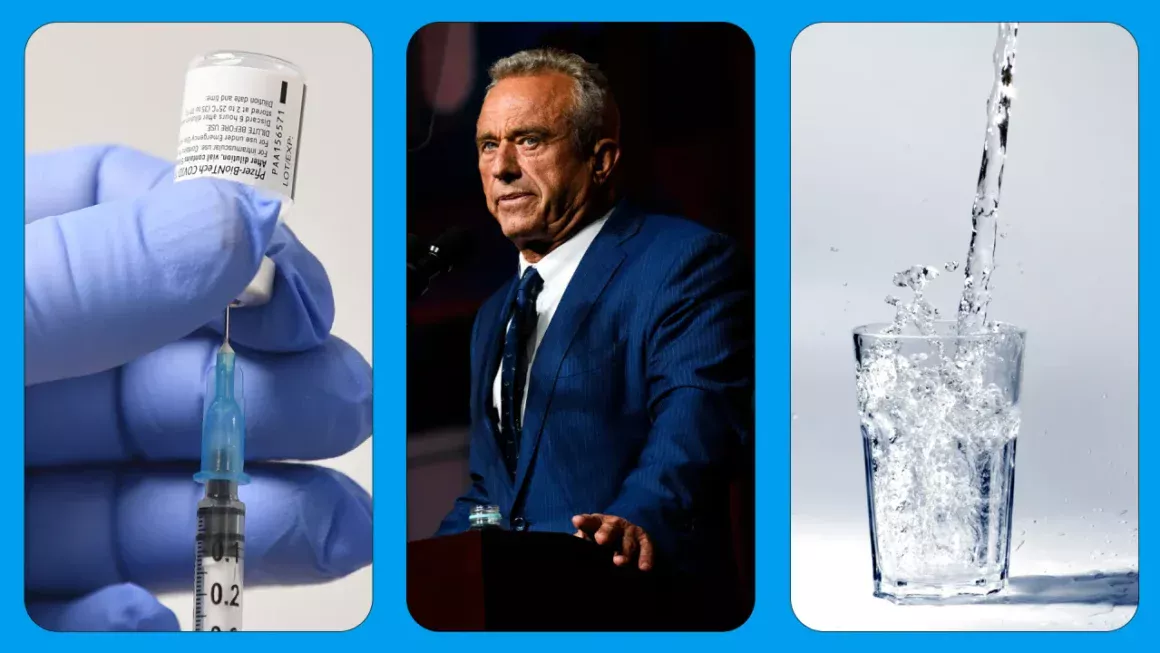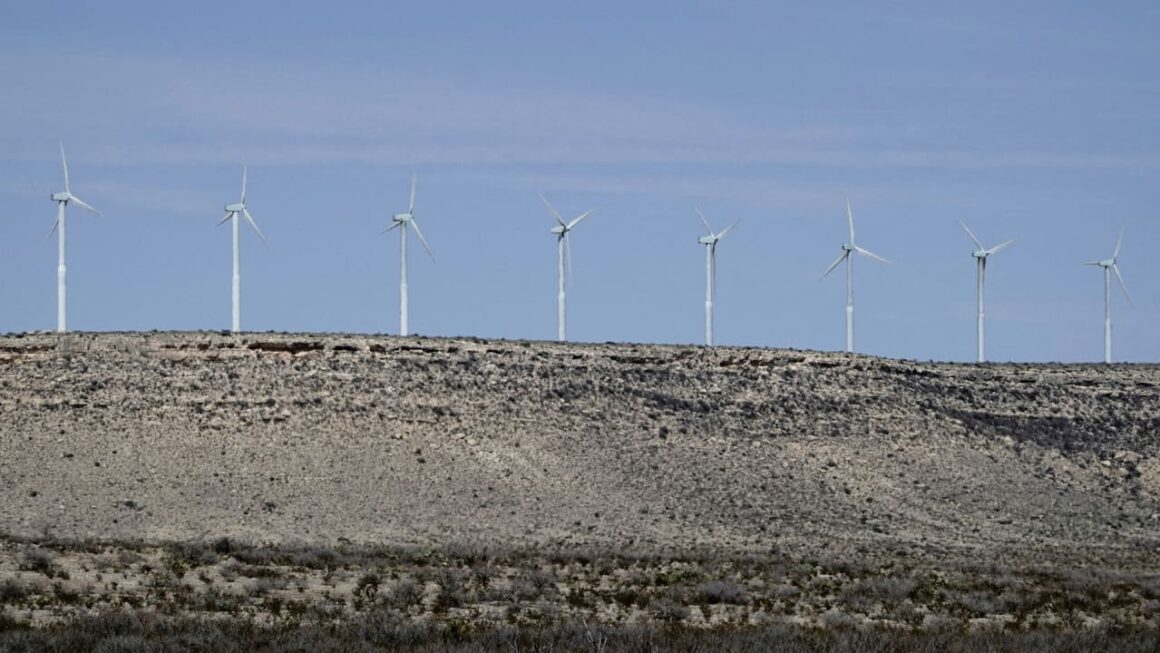The cover of Protecting the Environment: A Half Century of Progress contains a split photo, the left half showcasing the horrific smog of 1960s Los Angeles, the right showing the Cuyahoga River in 1952, polluted and on fire. This retrospective document, put together by the EPA Alumni Association in 2020, goes on to note that “many Americans today . . . were not yet born when the EPA was created . . . or they were too young to appreciate how air and water quality were deteriorating until governments, private companies, and individual citizens stepped up to take action.”
Americans today may not fully appreciate how far the Environmental Protection Agency has taken the U.S. from that era, but many in the environmental community fear the upcoming presidential election might send the nation back in that direction. Ask EPA alumni and environmental advocates about their feelings on the agency’s work, its mandate, and the threat it faces from a potential second Trump administration, and the comments have an undercurrent of dread.
Should former President Donal Trump win a second term in the White House, he would wreak havoc on the agency, they tell Fast Company, leading it away from its science-based mission and potentially leaving a vast workforce of talented policy experts out of a job.
The Project 2025 playbook for dismantling the civil service and weakening the federal government specifically talks about the EPA as a politicized agency ripe for reorganization and downsizing. It says the EPA overhypes climate change, pursues “vendetta-driven enforcement,” and has waged war on makers of pesticides, natural gas pipelines, and fossil fuel.
“Project 2025 is a blueprint for the demolition of the EPA,” says Jeremy Symons, a consultant whose Symons Public Affairs group advises nonprofits. “Trump would put America back under the thumb of oil executives and lobbyists.”
Trump’s Plan to Harness the Power of Personnel
Despite a record of corruption from then-EPA head Scott Pruitt and the loss of hundreds of scientists, the first Trump administration didn’t significantly cut the EPA workforce. According to EPA figures, there were 15,445 full-time workers in 2016, which dipped to 14,493 in 2019. That has slowly increased to around 16,800 today, thanks in part to the Bipartisan Infrastructure Law and the Inflation Reduction Act, the latter of which needed EPA staff to oversee some of its implementation.
Part of the fear of a second Trump term is the precariousness of the current workforce. The Republican plan, highlighted in Project 2025, seeks to kneecap the agency via a variety of means: removing civil service protection for many jobs, thereby making it possible to fire career staffers and replace them with political appointees; and gutting departments like the Environmental Justice and Civil Rights office, the offices of Public Engagement and Environmental Education, and International and Tribal Affairs, which together account for more than 10% of the agency’s jobs.
“They’re certainly viewing personnel as policy,” says Frances Sawyer, who leads Pleiades Strategy, a firm that advises mission-driven organizations. “The personnel side, and what they’re hoping to accomplish in terms of eroding basic health and safety regulations, is deeply tied together.”
Sawyer is particularly concerned about the loss of scientific expertise, especially around topics like climate change, toxicology, and air quality.
A more politicized EPA would likely drive people to quit—only to be replaced with anti-regulatory staffers, potentially with ties to groups like the Koch network. Project 2025 specifically spells out plans to appoint political operatives to oversee the career science staff of the EPA, as well as reorganize the way enforcement is run.
“If people choose to go ahead and retire, the agency may not be able to backfill them, so you’re going to lose a lot of historical knowledge, and it’s going to be harder and harder for the agency to be able to fulfill its mission,” says Jennifer Orme-Zavaleta, a longtime EPA staffer and administrator who served during the Trump administration.
These former staffers have an exceptional understanding of many facets of environmental regulation and clean energy technology that would be valuable to companies in the private sector.
“There are people who have a tremendous amount of knowledge about different industrial sectors, like the utility sector, the automobile sector, the industrial sector, and converting them to more clean energy models,” says Stan Meiburg, a former EPA deputy administrator and part of the Environmental Protection Network. “Those people with technical and engineering skills could pretty easily find jobs, because the business sector is going to not stop thinking about the renewable energy economy.”
Orme-Zavaleta also believes staffers could migrate to nonprofits and nongovernmental organizations like the Natural Resources Defense Council or the Environmental Defense Fund, find gigs in academia, or even start their own consulting groups. Meiburg notes the work of the Center for Climate and Energy Solutions, which, during the Trump years, collaborated with city governments and industry to advance clean energy goals.
Efforts to curtail the Inflation Reduction Act—and climate grants
There are a lot of unknowns about what could happen to the EPA and environmental policy under a second Trump term. While much of the Inflation Reduction Act isn’t subject to executive orders or actions, there are grants meant for cities or environmental justice groups that could be delayed or slow-walked, according to Meiburg.
“A chill ran down my spine when I read the part of Project 2025 that said they were going to go after any nonprofit that they felt had a political agenda,” says Symons, noting that many EPA grant recipients would likely fall into this bucket. “That means a political screen on grants, which might lead to political witch hunts to strip funding for these organizations.”
Some of the effectiveness of a Trump term’s environmental agenda depends on the composition of Congress. A Democratic House or Senate could keep Trump from rolling back federal funding for clean energy. Meiburg points out that the first Trump administration proposed cutting the EPA’s budget by 40%, with a 25% reduction in staff. But even with a Republican-controlled Congress, the cuts didn’t come, and the end result was a flat, or even slightly increased, budget.
“The last Trump administration transition was inefficient at best,” Meiburg says. “The opponents of the EPA are trying to lay out a blueprint for very wide-reaching initiatives. Project 2025 should absolutely be taken seriously as a source of great policy concern.”
Even with a divided government, Trump would almost certainly be able to slow the clean energy transition and weaken regulations, resulting in dirtier air, water, and communities.
Symons calls it “a choice between a firefighter and a climate arsonist.” The Center for American Progress noted that Project 2025’s vision would “significantly increase the number of Americans suffering from asthma, cancer, heart disease, and other health conditions.”
“A lot of really good things have been done to protect people’s health and to protect the environment,” Orme-Zavaleta says. “I see the potential for a lot of it to be rolled back, which would take decades to overcome.”


